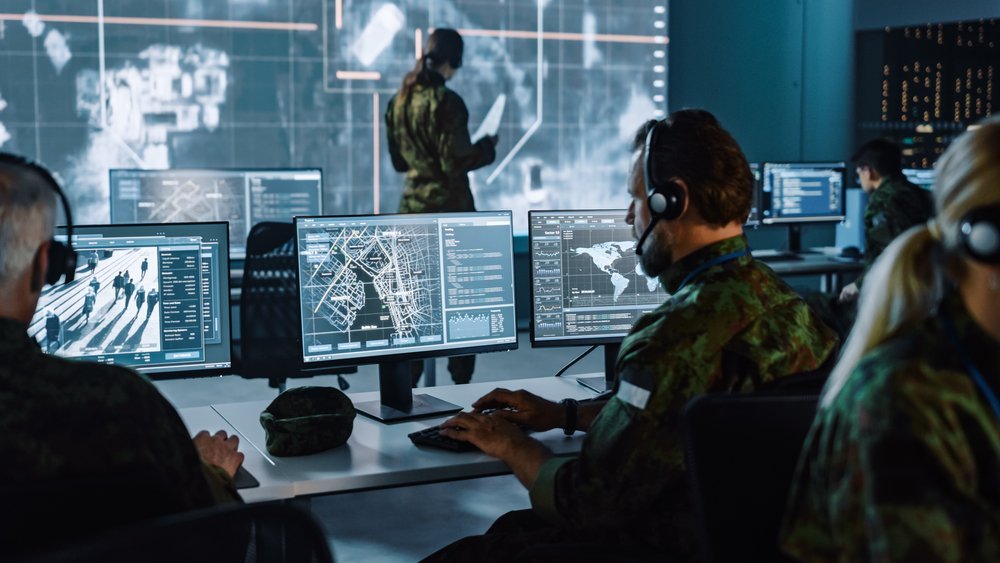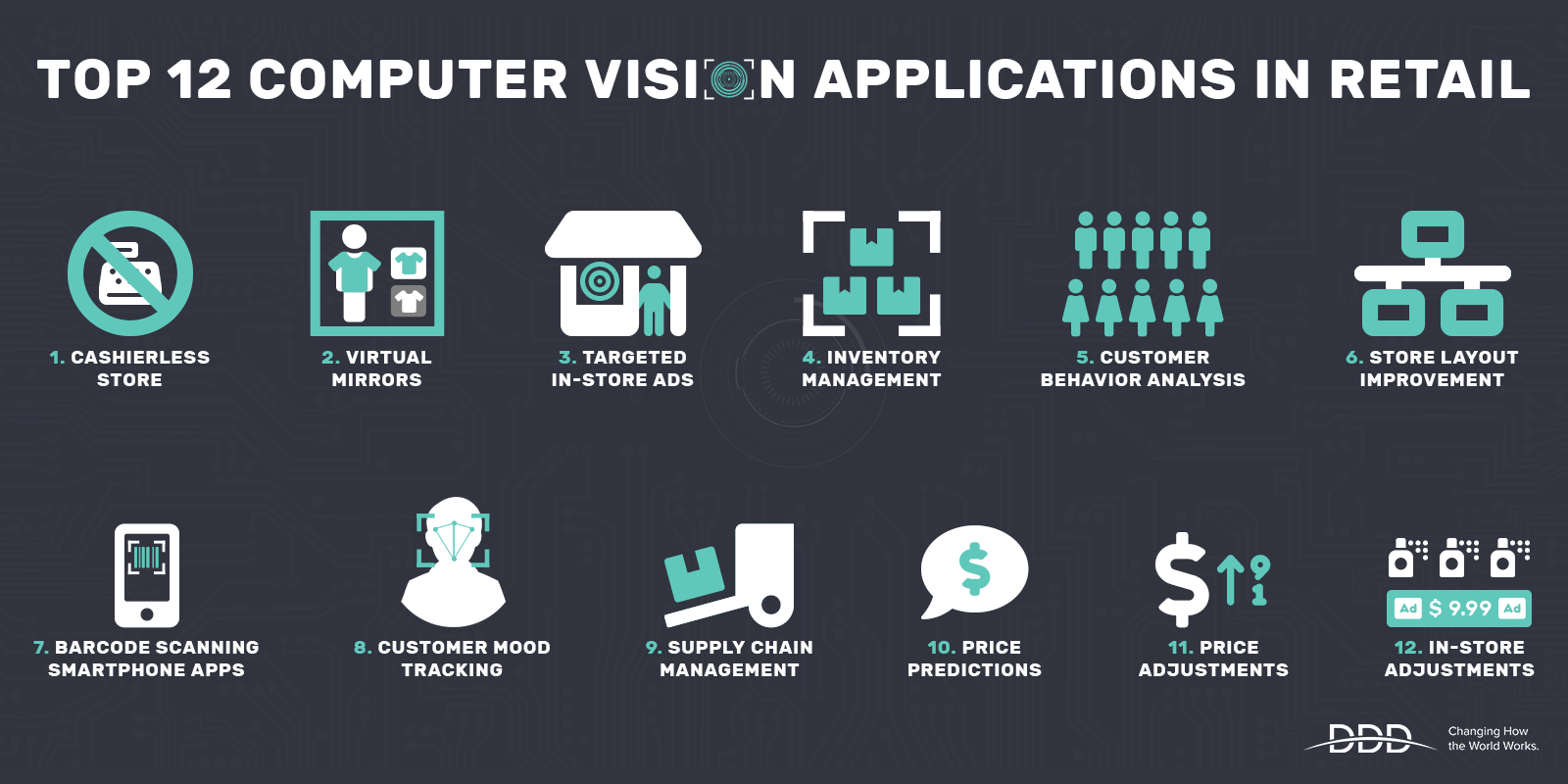The Future Of Retail: How Computer Vision Is Modernizing Retail
By Aaron Bianchi
Updated Feb 6, 2023
Computer vision in retail has become a necessity for most companies in today’s times. To give their customers a better and enhanced experience, retailers are adopting computer vision-led solutions. Moreover, it also helps retail businesses with shelf space management and customer behavior analysis. With so many advantages, computer vision has truly modernized the way retailers sell and the way customers purchase. What all can happen with retail AI? Let’s find out.
What is Computer Vision?
Computer vision is a technology of computer science that focuses on human vision and its replication to help computers see and identify objects around them, just like human beings do. In simpler words, computer vision is like replicating the functions of the human eye in a computer.
It is as interesting as it sounds because its application in multiple industries is beneficial, not only for businesses but also for consumers. It makes every kind of process and experience faster and smoother. Whether it’s face recognition in your smart home or retail stores without cashiers, everything is so advanced with computer vision that not using it might slow down your life.
Talking specifically about retail, isn’t it interesting that everyday work like inventory management can become a lot easier? What other advantages does the application of computer vision have for the retail industry? Let’s explore.
How is Computer Vision used in Retail?
Computer vision can help upgrade a customer’s journey by improving store layouts based on real feedback and data. There’s no need to rely on “projections” anymore as you have actual customer data to help you define their experience.
With the e-commerce boom, how do you attract and retain customers for a retail store? A retail store is competing with online shops that take just a few minutes to give the customer what they want. The customer checks out in no time too. If you replicate this experience in a physical store, you keep your customers happy.
In the retail industry, computer vision is used in various ways like self-checkout, virtual mirrors and autonomous robots among others. We will discuss 12 applications of computer vision in retail to give you a clearer picture.
Top 12 Computer Vision Applications in Retail
Cashierless Stores
Customers can now enjoy “Self-checkout”. No hassle of long waiting times and reduction in human error in billing is now possible, all thanks to solutions that come from computer vision. The new age deep learning technologies can automatically detect product prices and calculate the bill.Virtual Mirrors
Virtual mirrors provide unparalleled personalization options that boost customer experience in retail. It is a traditional mirror that has a display behind the glass. These virtual mirrors have computer vision cameras that help them display a broad range of contextual information to the consumer. For example, a fashion brand’s virtual mirror can have the technology that allows the customer to see various outfit options that will suit them without even trying them on physically!Targeted In-Store Ads
Computer vision in retail has the ability to help the shops recognize and analyze buying patterns in returning customers. This is a powerful tool that allows businesses to send customized discounts or relevant Ads when these customers enter the store. Their purchase history metrics also allow the store to recommend products that will appeal more to the buyer increasing the likelihood of a sale.Inventory Management
With computer vision, retailers can automate their inventory count which helps them update their inventory system in real time. Customers expect to know the availability information of products beforehand, so this feature greatly enhances the customer delight level. Think about it. Who wants to visit a shop only to find that the item they’re looking for is out of stock? You’ll do them a favor and you’ll do your business a favor too by not losing out on that sale.Customer Behavior Analysis
Computer vision helps retail stores count the number of shoppers every day and study their overall behavior. From calculating the total time spent with each product to how much time buyers spend in the store, retailers can keep improving their sales strategy with the help of computer vision.Store Layout Improvement
Cameras with computer vision can map customer movements and identify “hot areas” where customers spend the most of their time. This helps retailers to manage the overall layout of the store and maximize customer experience preventing early walkouts. From better product placement to focusing their discounts and deals in specific areas, retailers can now improve their store layout to meet customer needs, all thanks to computer vision.Barcode Scanning Smartphone Apps
A lot of people trust the online shopping experience more because they have easy access to product reviews. This helps them make more informed decisions instantly. When it comes to physical stores, you walk in and you like a product, buy it and walk out. The next thing you know is that the product has horrible reviews and it turned out to be a complete waste of your money. Nobody wants to be in this situation.
Computer vision gives physical stores the ability to showcase reviews as instantly as online stores. There are barcode scanning apps which help customers scan the barcode of products via their smartphone cameras and receive all the information and reviews about the product.Customer Mood Tracking
Computer vision can detect the customers’ mood during their shopping journey. For example, Walmart has already introduced a facial recognition system which helps cameras detect annoyed customers via cameras at the checkout point. If such a case is detected, a store personnel can salvage the situation by talking to the customer about what’s bothering them. This helps show the customer that the store cares about how they feel and they’re ready to resolve any grievance that the customer may have.Supply Chain Management
Just like inventory management, supply chain management can become a seamless process with the help of computer vision. With the availability of data like the sales history of products, customer demands, trends, promotions, weather, etc AI can be used for effective restocking. This leads to fewer things going unpicked while there’s enough available for those who want more of a particular type of product.Price Predictions
Based on specific demands and trends, launch dates, and characteristics, a retail business can predict the pricing of a product. This technology can be used in retail by creating a tool or app that helps customers know the price changes and upcoming price trends for a product. This feature is easy to build with the help of artificial intelligence and can help a brand to build customer loyalty.Price Adjustments
AI Applications for retail stores can help stores visualize and try multiple pricing strategies. Once all the information about other products and promotions, sales, etc is collected, computer vision can help businesses prepare their best offers to acquire new customers. This flexibility in changing the pricing strategy based on actual information can be a great way to scale one’s business and wouldn’t be possible without computer vision.In-Store Advancement
There are many other things in a store that can be revolutionized with the help of computer vision. Some retailers use The Kroger Edge technology that eliminates paper price tags and replaces them with smart shelf tags. This technology also helps with video ads and promotions on display screens. Other such in-store technologies and bots use translation for different languages to help assist customers from various regions.
How Can Computer Vision Solve Retail Industry Challenges?
With so many amazing and helpful things that computer vision does for the retail industry, it surely does solve a lot of problems faced by both businesses and customers. Here are nine such challenges that computer vision eliminates.
With accurate estimation of supply chain expenses at every level there is less chance of extra expenditure and losses in the process.
This correct estimation of supply chain expenses also lowers freight costs for third-party associates. This helps them prevent losses and ensures long-term relationships with their business partners.
Analytics and prediction of trends and changing prices saves businesses from overpricing or underpricing their products. This helps them reduce their chances of losses. For the customers, this comes as a delight as they have more competitive prices and products to choose from without having to settle for something they don’t like.
All the important information gathered via computer vision in retail from big supply chain datasets can be used for an effective retail decision-making process. Without computer vision retail decision-making was a difficult process as there was not much verifiable information available.
AI could be connected with other systems and departments within the business to improve the demand and supply planning and capacity management.
Computer vision helps in optimizing orders to accurately meet demand. This increases customer loyalty thereby reducing the number of irate customers.
Automating vehicles in the supply chain such as trucks and delivery robots increases efficiency thereby making some parts of the process autonomous.
Artificial intelligence when linked with GPS can track and help with better routes for delivery. This can improve the employees’ and the customers' experience as deliveries can be faster.
When it comes to routing, AI can also plan all delivery operations for the business making all processes smooth and efficient.
How Can Digital Divide Data Help?
If you’re a retail business that wants to be right at the top of your game and exceed your customers’ expectations, computer vision is your answer. That’s one method that lets you measure and analyze your growth while making your processes easier and faster. There’s no better way to scale your business and you’ll believe it when you use it. No idea where to start with AI implementation for your business? We’re just a click away.









